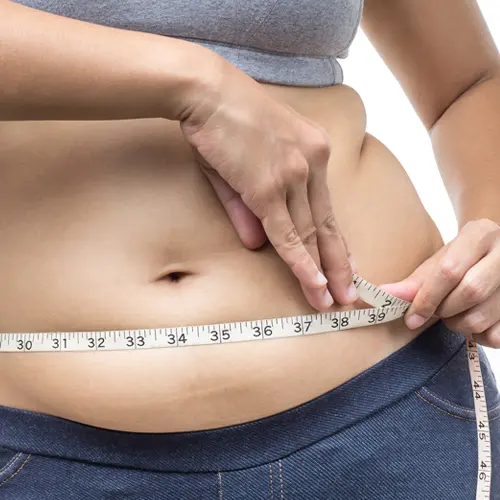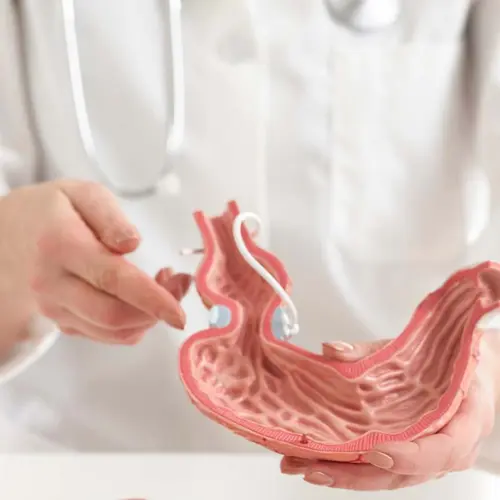Table of Contents
What is a ketogenic diet? Embarking on the ketogenic diet can be a transformative journey toward improved health and wellness.
This comprehensive guide is tailored for beginners, offering a clear roadmap to navigate the essentials of the keto lifestyle.
We delve into the science behind ketosis, where your body efficiently burns fat for fuel, leading to potential benefits like weight loss, enhanced energy, and better mental clarity.
This guide simplifies the complexities of macronutrient ratios, provides practical meal-planning tips, and addresses common misconceptions.
Whether you want to improve your health, lose weight, or explore a new dietary approach, our guide offers the tools and insights to start your keto journey confidently.
What is the Ketogenic Diet?
The Ketogenic Diet, commonly known as "keto," is a low-carbohydrate, high-fat diet that aims to shift your body's metabolism into ketosis.
In ketosis, your body burns fat for energy instead of carbohydrates incredibly efficiently.
This metabolic change is achieved by drastically reducing carbohydrate intake and replacing it with fat, which leads to a reduction in blood sugar and hormone levels.
The typical macronutrient ratio for a ketogenic diet is:
- High in fats: About 70% to 80% of total daily calories come from fats.
- Moderate in proteins: Around 10% to 20% of daily calories.
- Very low in carbohydrates: Only about 5% to 10% of daily calories, equating to around 20 to 50 grams of carbs daily.
This composition forces your body to rely on fats for its primary energy source, leading to the production of ketones in the liver, which are used for energy in place of glucose.
The diet is often used for weight loss. It can also offer other health benefits, such as improved blood sugar control for people with diabetes, enhanced mental clarity, and increased energy levels. Initially, it was developed in the 1920s as a treatment for epilepsy, particularly in children who did not respond to other treatments.
It's important to note that while the ketogenic diet can be beneficial for many, it may not be suitable for everyone, and it's recommended to consult with a healthcare provider before starting any new diet, especially one that involves such significant changes to your usual eating habits.
What is Ketosis?
Ketosis is a metabolic state that occurs when your body shifts its primary energy source from carbohydrates to fats.
In this state, the body begins to produce and utilize molecules called ketones as an alternative fuel source.
Ketones are produced in the liver from the breakdown of fats, and they can be used by the body's cells, including the brain, for energy.
Ketosis typically occurs when carbohydrate intake is significantly reduced, such as in the ketogenic diet.
When you consume very few carbohydrates, your body's hormone levels decrease, and it starts to break down stored fats into fatty acids.
These fatty acids are then converted into ketones through a process called ketogenesis.
The critical characteristics of ketosis include:
- Fat Burning: The body becomes highly efficient at burning fat for energy from dietary fats and stored body fat.
- Ketone Production: Ketones are produced in the liver and released into the bloodstream to be used by various tissues for energy.
- Reduced Blood Sugar: Ketosis often leads to lower blood sugar levels, as the body relies less on glucose from carbohydrates.
- Appetite Control: Many people experience reduced hunger and improved appetite control while in ketosis.
Ketosis is the central metabolic feature of the ketogenic diet and is responsible for many potential benefits, including weight loss and improved metabolic health.
It's important to note that ketosis is a natural metabolic state that the body can enter in certain circumstances, such as during fasting or prolonged exercise, as well as through dietary changes like the ketogenic diet.
However, it's essential to monitor and manage ketosis carefully, especially if you have specific medical conditions or concerns, and it's advisable to consult with a healthcare professional before embarking on a ketogenic diet.
What Foods Can I Eat on a Keto Diet?
On a ketogenic diet, the primary focus is on consuming foods high in healthy fats, moderate in protein, and very low in carbohydrates. Here's a list of foods that are typically included in a keto diet:
- Healthy Fats:
- Avocado and avocado oil
- Olive oil
- Coconut oil
- Butter and ghee (clarified butter)
- Nuts and seeds (in moderation)
- Fatty fish like salmon, mackerel, and sardines
- Proteins:
- Meats: Beef, pork, lamb, poultry (preferably skin-on for added fat)
- Fatty fish: Salmon, trout, tuna
- Eggs: Eggs are a versatile source of protein and healthy fats.
- Low-Carb Vegetables:
- Leafy greens: Spinach, kale, Swiss chard, etc.
- Cruciferous vegetables: Broccoli, cauliflower, Brussels sprouts
- Bell peppers
- Zucchini
- Cucumber
- Dairy:
- Full-fat dairy products: Cheese, cream, sour cream, and Greek yogurt (unsweetened)
- Be cautious with milk, as it contains lactose, a type of sugar.
- Nuts and Seeds (in moderation):
- Almonds, walnuts, macadamia nuts, chia seeds, flaxseeds, and pumpkin seeds can be included in limited quantities due to their carbohydrate content.
- Berries (in moderation):
- Some berries like strawberries, raspberries, and blackberries can be consumed in small amounts, as they are lower in carbs than other fruits.
- Condiments and Flavorings:
- Herbs and spices (avoid blends with added sugar)
- Vinegar (e.g., apple cider vinegar)
- Mustard, mayonnaise (check labels for added sugars)
- Beverages:
- Water is essential.
- Unsweetened tea and coffee (with or without cream)
- Sugar-free sparkling water or flavored water
Foods to Avoid on a Keto Diet:
- High-Carb Foods:
- Bread, pasta, rice, and other grains
- Sugary foods: Candy, cakes, cookies, and sugary beverages
- Most fruits: Bananas, apples, oranges, etc.
- Starchy Vegetables:
- Potatoes, sweet potatoes, and corn
- Legumes:
- Beans, lentils, and chickpeas
- Processed and Fast Foods:
- These often contain hidden sugars and unhealthy fats.
- Highly Processed Oils:
- Vegetable oils like soybean, corn, and canola oil should be limited.
- Alcohol:
- Alcoholic beverages are typically high in carbs and can disrupt ketosis.
It's essential to carefully monitor your carbohydrate intake while on a ketogenic diet to ensure you stay within your daily carb limit, usually around 20-50 grams of net carbs.
Additionally, individual dietary preferences and nutritional needs can vary, so it's advisable to consult with a healthcare provider or a registered dietitian before starting a keto diet to ensure it's suitable for your specific goals and health conditions.
Can I Lose Weight on the Keto Diet?
The ketogenic diet is effective for weight loss by inducing a state of ketosis, where the body primarily burns fat for energy.
The body shifts its metabolism by drastically reducing carb intake and increasing fat consumption.
Ketosis leads to reduced hunger and improved appetite control, making it easier to consume fewer calories.
Stabilized blood sugar levels and lowered hormone promote fat burning and reduce cravings for sugary foods.
Additionally, the initial water weight loss provides quick results. Increased energy levels encourage physical activity, contributing to weight loss.
However, individual results vary, and consulting a healthcare provider is advisable before starting the diet to ensure it aligns with your goals and health needs.
Are There Any Side Effects?
Yes, there can be side effects when starting the ketogenic diet, often referred to as the "keto flu." These side effects typically occur during the initial phase of adapting to ketosis and may include:
- Fatigue: Many people experience fatigue and low energy levels as the body adjusts to using fat for fuel instead of carbohydrates.
- Headache: Headaches are expected during the transition, often due to dehydration and electrolyte imbalances.
- Nausea and Digestive Issues: Some individuals may experience digestive discomfort, including nausea, constipation, or diarrhea.
- Dizziness and Lightheadedness: Fluid and electrolyte balance changes can lead to dizziness or lightheadedness.
- Irritability: Mood swings and irritability are possible as the body adapts to ketosis.
- Muscle Cramps: Electrolyte imbalances may lead to muscle cramps.
It's important to note that these side effects are usually temporary and can be mitigated with proper hydration, electrolyte supplementation, and gradual adjustment to the diet. Additionally, not everyone experiences these symptoms, and some individuals transition smoothly into ketosis.
Suppose you plan to start the keto diet. In that case, it's advisable to consult with a healthcare provider or a registered dietitian who can guide on managing potential side effects and ensure that the diet is safe and suitable for yourneeds.
Can I Exercise While on a Keto Diet?
Yes, you can exercise while on a ketogenic diet, and many people do. However, it's essential to understand how exercise can be affected by the keto diet and how to adapt to it:
- Initial Adjustment: When you first start the keto diet, you may experience decreased energy levels and endurance during exercise. This is because your body adapts to using fat as its primary energy source instead of carbohydrates. It's common to feel fatigued initially.
- Keto Adaptation: Over time, your body becomes more efficient at utilizing fat for energy, and many individuals find that their energy levels and exercise performance improve. This process of evolving "keto-adapted" can take several weeks.
- Types of Exercise: The kind of exercise you engage in can influence your experience on the keto diet. Low to moderate-intensity activities like walking, cycling, and yoga are generally well-tolerated. High-intensity activities may require more time for adaptation.
- Timing: Some individuals find it beneficial to time their carbohydrate intake around their workouts. Consuming a small amount of carbohydrates before high-intensity workouts can boost energy without significantly affecting ketosis.
- Hydration and Electrolytes: Proper hydration and electrolyte balance are crucial while on keto, especially when exercising. Dehydration and electrolyte imbalances can lead to symptoms like muscle cramps and dizziness.
- Recovery: Adequate protein intake is essential for muscle recovery and repair after exercise. Ensure that your diet includes enough protein to support your exercise routine.
- Consult a Professional: If you have specific fitness goals or concerns about exercise on the keto diet, consider consulting a fitness trainer or registered dietitian specializing in ketogenic nutrition. They can provide personalized guidance.
In summary, exercise is compatible with the ketogenic diet, but it may require an adjustment period for your body to adapt to using fat for energy. Staying hydrated, maintaining proper electrolyte balance, and choosing appropriate types of exercise can help you continue an active lifestyle while on keto.
Is the Keto Diet Safe for Everyone?
The ketogenic diet can be safe and effective for many people, but it may not be suitable for everyone. Here are some considerations:
- Medical Conditions: Individuals with certain medical conditions, such as pancreatitis, liver disease, gallbladder disease, or a history of eating disorders, should avoid or carefully consider the keto diet. People with type 1 diabetes should only attempt it under medical supervision.
- Pregnancy and Breastfeeding: Pregnant and breastfeeding women have increased nutritional needs, and the keto diet may not provide sufficient nutrients for both the mother and the developing baby. It's generally not recommended during this period.
- Medications: Some medications, like those for diabetes, may require adjustments when on the keto diet. It's essential to consult with a healthcare provider to manage medications appropriately.
- Children: The keto diet has been used as a treatment for epilepsy in children under medical supervision. However, it's crucial to implement it carefully and under professional guidance in this age group.
- Individual Variation: People have different responses to the keto diet. While some thrive on it, others may experience side effects or struggle to maintain long-term.
- Consult a Healthcare Provider: Before starting the keto diet, especially if you have underlying medical conditions or concerns, it's crucial to consult with a healthcare provider or a registered dietitian. They can assess your health situation and provide personalized guidance.
- Long-Term Considerations: The long-term safety and sustainability of the keto diet are areas of ongoing research. Some concerns include potential nutrient deficiencies and the need for a varied diet.
It's essential to approach the ketogenic diet cautiously and ensure it aligns with your health goals and specific circumstances. Consulting with a healthcare professional or a registered dietitian can help you make an informed decision and receive guidance on how to implement and manage the diet if it suits you safely.
How Do I Know if I'm in Ketosis?
You can determine if you're in ketosis through various methods, both subjective and objective. Here are some ways to assess whether your body is in ketosis:
- Ketone Testing Strips: Ketone urine testing strips, known as ketosis, are readily available at pharmacies. You can use them to measure the presence of ketones in your urine. The strips change color to indicate the level of ketones, providing a rough estimate of your ketone production. However, as your body becomes more keto-adapted, you may excrete fewer ketones in your urine, leading to lower readings.
- Blood Ketone Meters: Blood ketone meters are more accurate than urine strips and provide real-time measurements of ketone levels in your blood. You can use a lancet to prick your finger, and the meter analyzes a drop of blood. This method offers precise information about your ketone levels, typically millimoles per liter (mmol/L). A reading of 0.5 mmol/L or higher is considered indicative of ketosis.
- Breath Ketone Meters: Breath ketone meters measure acetone levels in your breath, another type of ketone. They are non-invasive and provide real-time readings. Higher acetone levels in your breath suggest that you're in ketosis.
- Subjective Signs: You may also experience subjective signs and symptoms of ketosis, such as reduced hunger, increased energy, mental clarity, and a distinct fruity or acetone odor on your breath.
- Improved Physical and Mental Performance: Some individuals notice improved physical performance during exercise and enhanced mental focus when in ketosis. These improvements can serve as indirect indicators of ketosis.
- Monitoring Food Intake: Another way to confirm ketosis is by closely tracking your food intake. If you're adhering to a low-carb, high-fat diet and consistently consuming fewer than 50 grams of net carbs per day, you're likely in ketosis.
It's important to note that ketosis can vary from person to person, and the level of ketones required to achieve the desired benefits may differ. Suppose you're using a specific range (e.g., 0.5 to 3.0 mmol/L) to target ketosis for a particular purpose, such as therapeutic ketosis for epilepsy. In that case, consulting with a healthcare provider for guidance is crucial.
Remember that while monitoring ketosis can be helpful, it's not the only measure of success on the ketogenic diet. Individual responses to the diet can vary, and factors like overall health, diet quality, and physical activity also play essential roles in achieving your goals. Consulting with a healthcare provider or a registered dietitian can provide valuable guidance on maintaining a safe and effective ketogenic diet.
F.A.Q
What is the Ketogenic Diet?
The ketogenic diet is a high-fat, low-carbohydrate diet that shifts your body's metabolism towards burning fats instead of carbohydrates, leading to ketosis.
What is Ketosis?
Ketosis is a metabolic state where your body uses fat as its primary source of energy instead of carbohydrates, producing ketones.
What Foods Can I Eat on a Keto Diet?
The diet mainly includes high-fat foods like meats, fatty fish, nuts, butter, oils, and low-carb vegetables. Carbohydrate-rich foods like grains, legumes, fruits, and sugars are limited.
How Long Does It Take to Enter Ketosis?
It varies, but typically it takes 2-7 days, depending on your body type, activity levels, and what you're eating.
Can I Lose Weight on the Keto Diet?
Yes, many people experience significant weight loss on the keto diet due to reduced appetite and a shift in your body burning fat for fuel.
Are There Any Side Effects?
Some people experience the "keto flu," which includes symptoms like headache, fatigue, and irritability, but these usually subside within a few days to a few weeks.
Can I Exercise While on a Keto Diet?
Yes, exercise is beneficial, but you might need to adjust your intensity levels and diet during the initial adjustment period.
Is the Keto Diet Safe for Everyone?
While beneficial for many, it's not suitable for everyone. People with certain medical conditions or those who are pregnant should consult a healthcare professional before starting.
How Do I Know if I'm in Ketosis?
Common indicators include reduced hunger, increased energy levels, and using ketone testing strips to measure ketone levels in your urine.
Do I Need to Count Calories on Keto?
While calorie counting isn't the focus, being mindful of your food intake and maintaining a balance of macronutrients is essential for achieving ketosis.




















